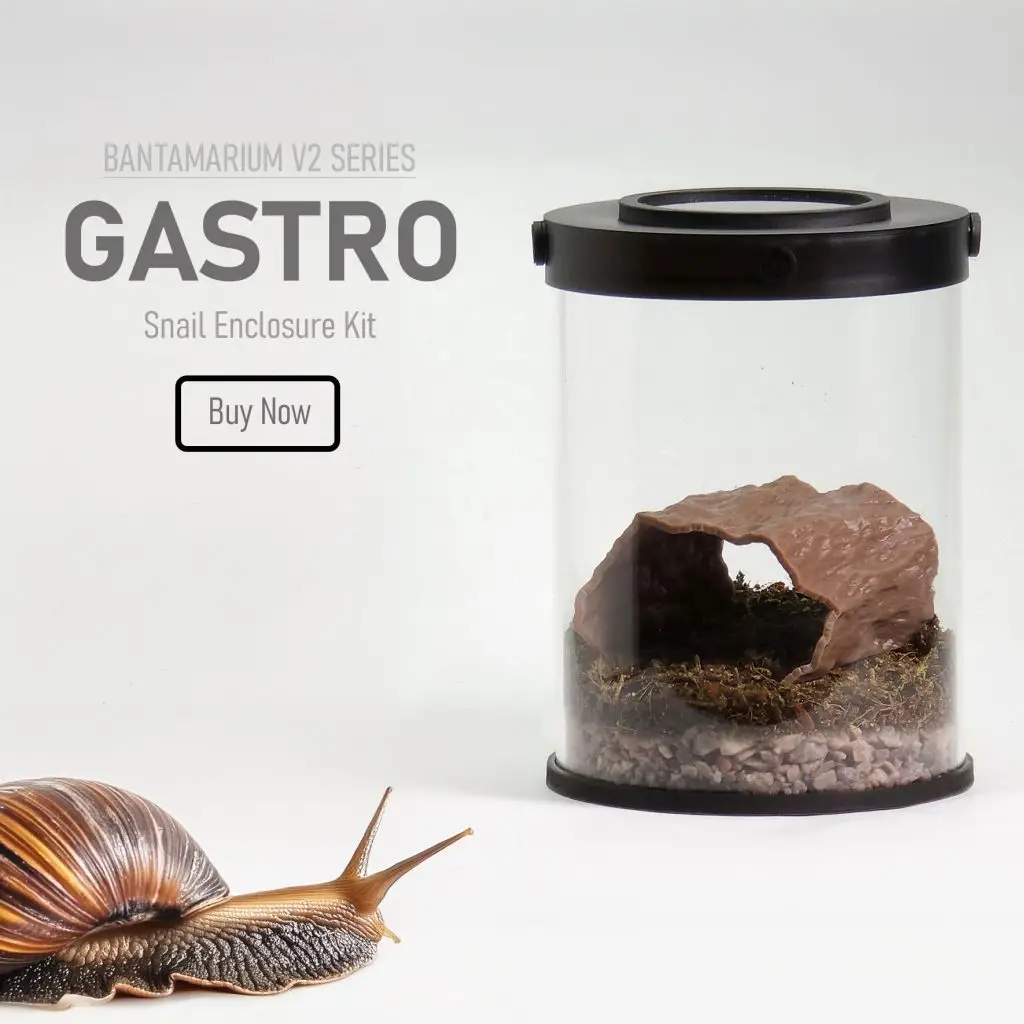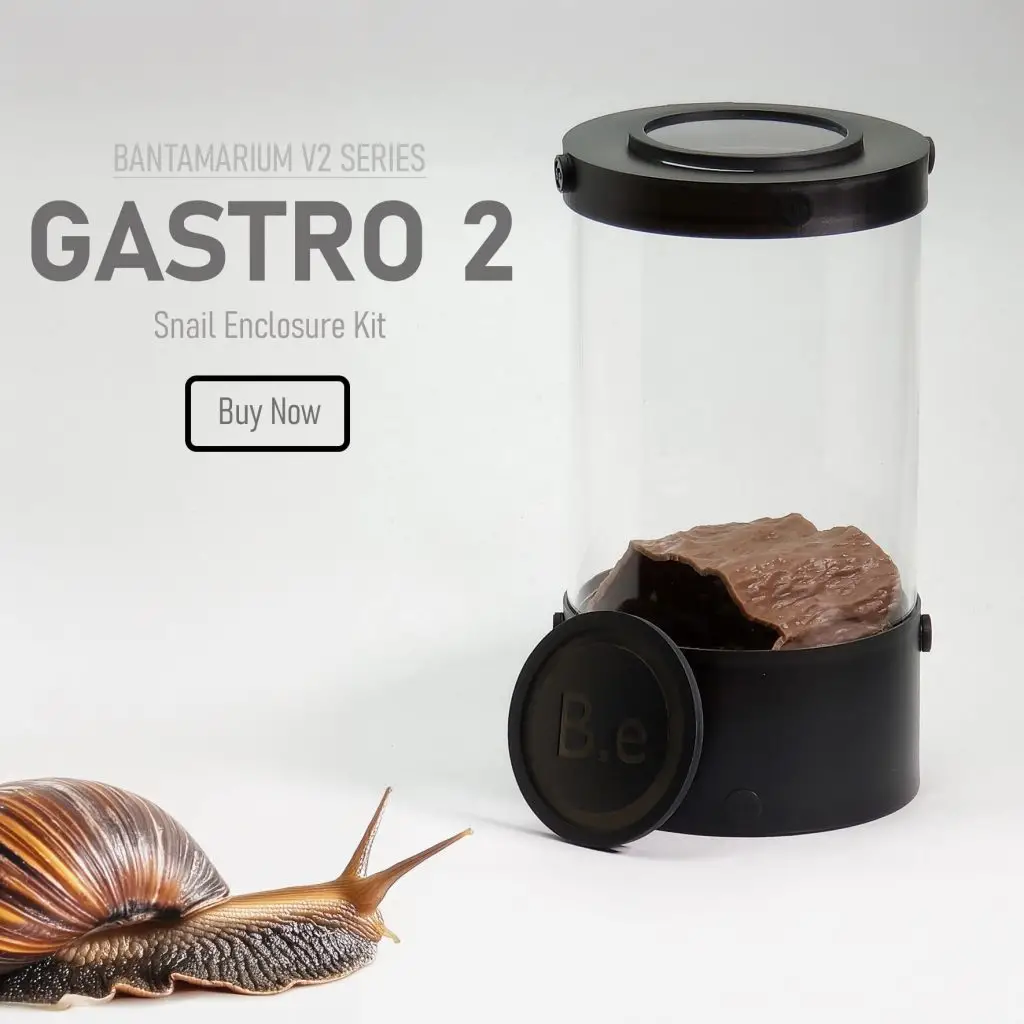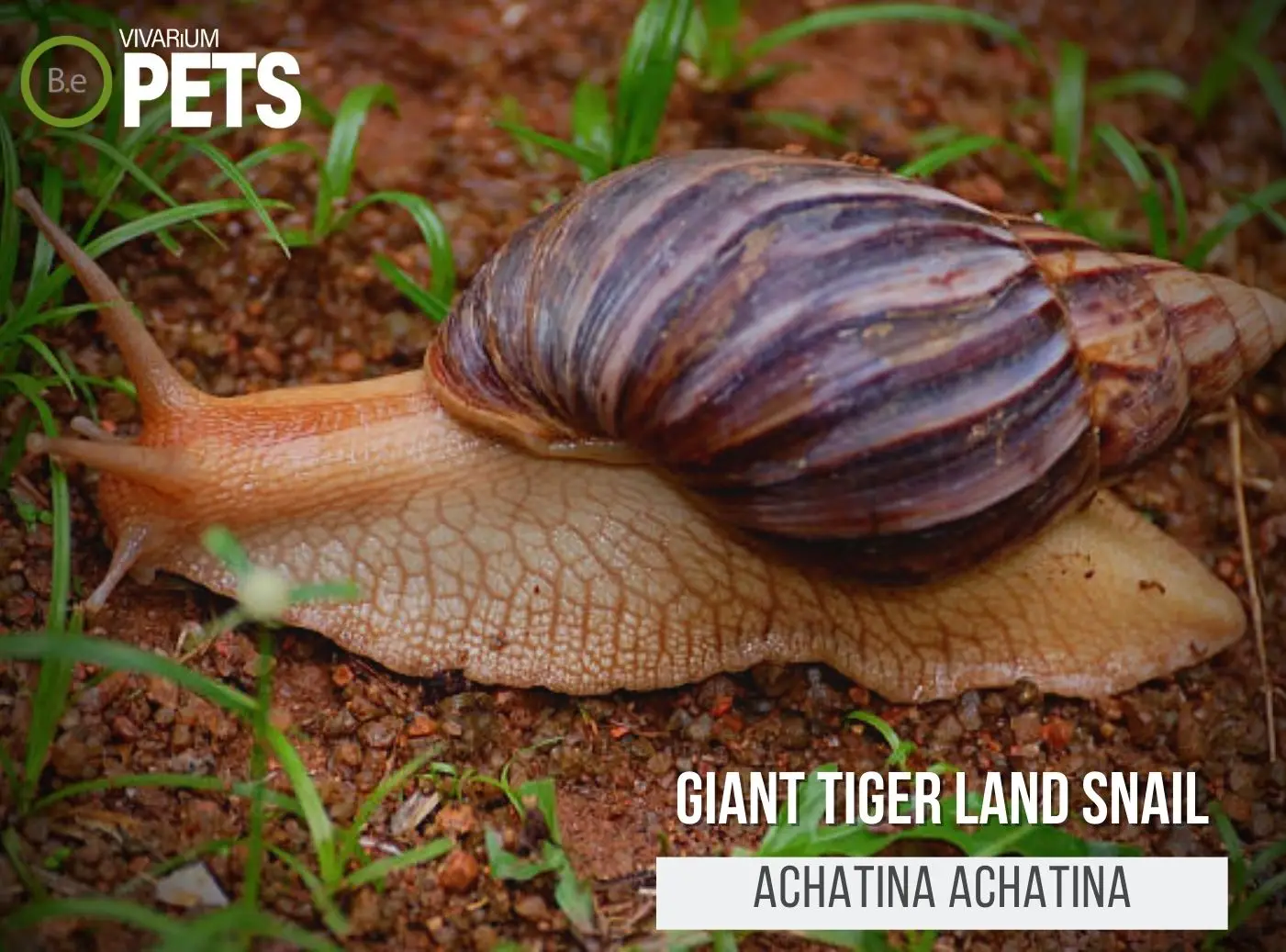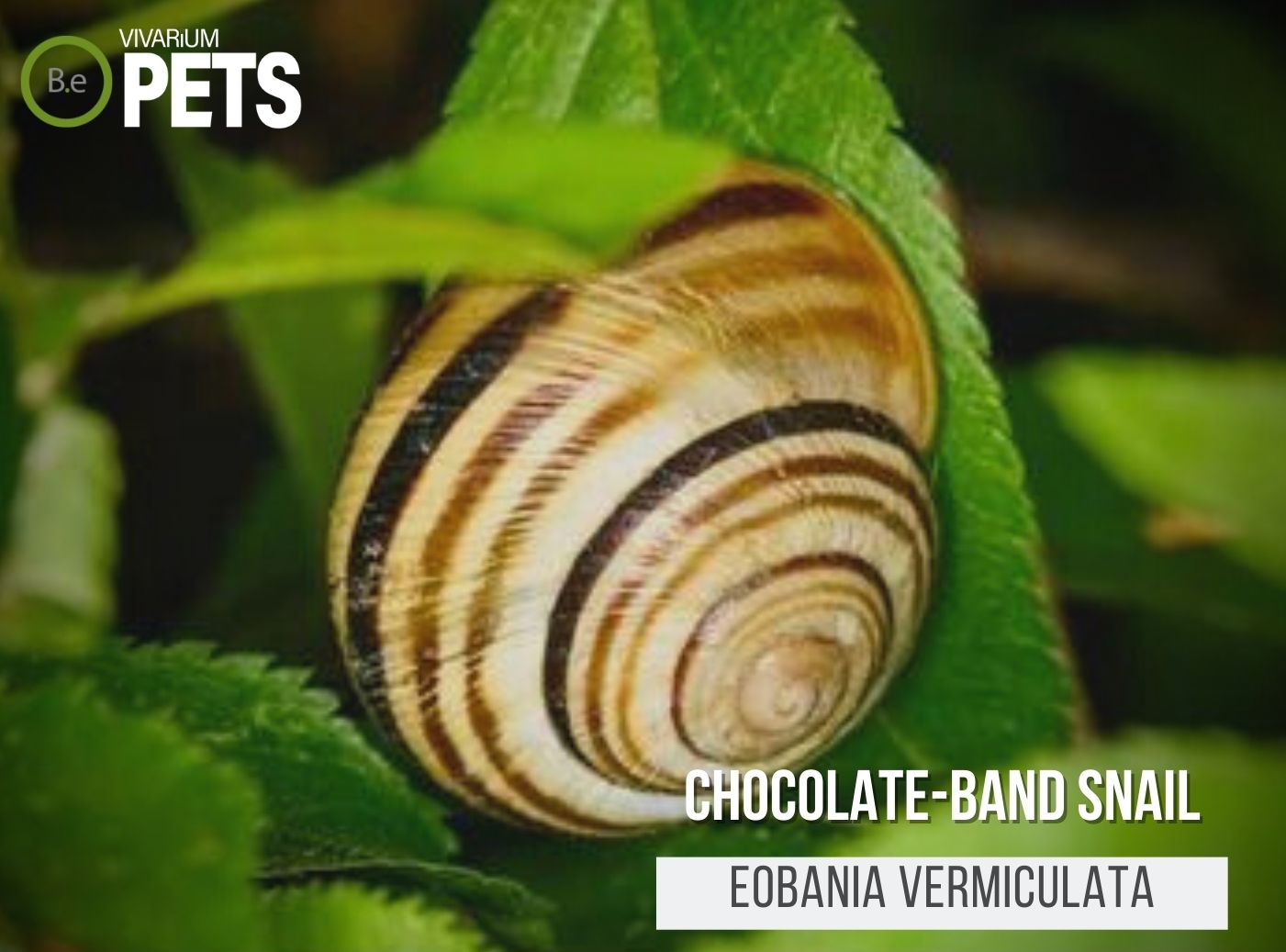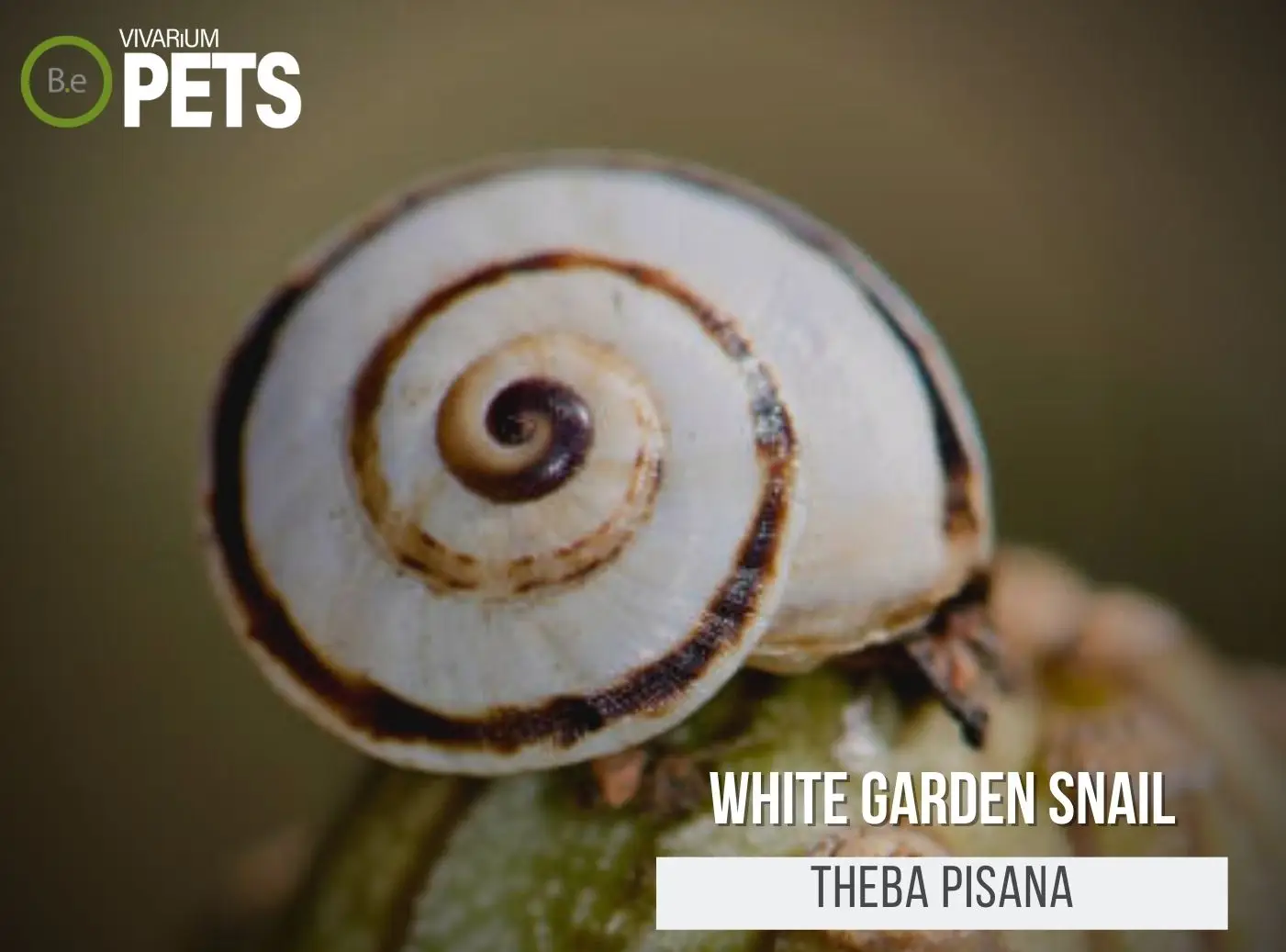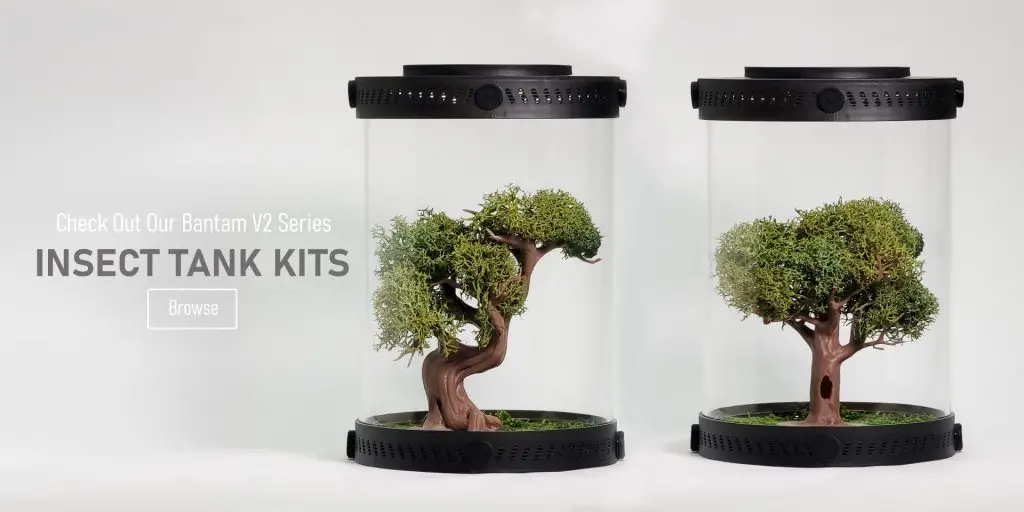Snello… welcome to our definitive guide on terrarium snails!
Here you will find a complete list of both the biggest and smallest terrarium snails, along with useful care and setup tips on how to keep them happy and healthy.
As well as covering tank requirements, temperature and humidity needs, and other essential details, you’ll also get expert advice on how to feed and care for your pet snails.
Read on to find out more!
Table Of Contents:
ToggleWhat Are Terrarium Snails?
Terrarium snails are small species of land snails that can live in an enclosed environment, such as a terrarium or paludarium.
These snails are typically found in tropical and subtropical climates, and they can come in a variety of sizes, colors, and shapes.
They require relatively high humidity to survive, and a specific range of temperatures depending on the species, as some prefer a warmer tank and some cooler.
These land-dependent snails tend to be larger than freshwater aquarium snails and live much longer as well.
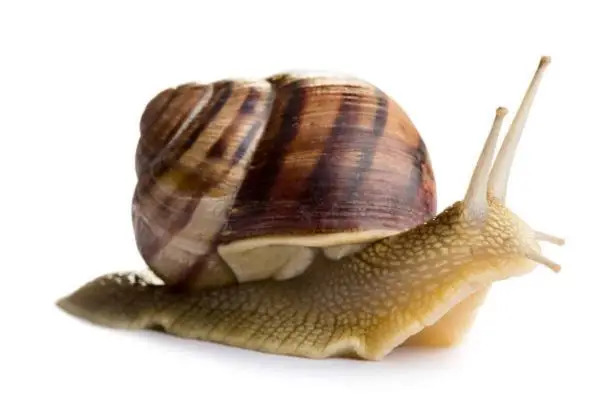

Purpose Of Terrarium Snails
Terrarium snails can be great tank inhabitants because they provide a variety of services.
For example, they help to aerate the soil in the enclosure and can turn over the substrate, providing natural aeration and nutrient circulation.
These snails also act as scavengers, helping to keep tanks clean by consuming organic material like decaying plant matter.
Even their natural waste can be beneficial to the tank by adding necessary nitrogen, phosphorous, and calcium to the vivarium.
In addition to these services, terrarium snails can also be an interesting and unpredictable addition to any miniature ecosystem!
Create the perfect home for your snails with our Customizable Snail Enclosure Kits, designed to meet all their habitat needs.
Best Types Of Terrarium Snails
Certain land-based snails are particularly better suited to life in a terrarium, due to their small size, easy-care requirements, and slow movement.
These snails are ideal because they require minimal maintenance, need limited space to thrive, and add a realistic touch to any naturalistic terrarium landscape.
Some of these snails have distinctive shell patterns, making them very pleasing to the eye, and they are also a useful extension of any natural cycle in the habitat.
Giant African Snail (Lissachatina fulica)
The Giant African Snail is a large species of land snail that can reach up to 8 inches in length.
With its light brown, thin, smooth shell and large size, this is one of the most spectacular and impressive terrarium snails available.
It is a very peaceful creature and not particularly active, but its majestic size alone makes it a wonderful addition to any terrarium.
Although it prefers wetter conditions and requires more humidity than other terrarium snails, its hardiness and resilience make it easier to care for than one might expect.
If you’re looking for more specifics on this land snail, here’s a full care guide on the Giant African Snail (Lissachatina fulica).
Giant Tiger Land Snail (Achatina achatina)
The Giant Tiger Land Snail is one of the largest and most impressive species of terrarium snails.
These stunning snails can reach up to 12 inches in length, showcasing their impressive size.
They have a unique striped shell pattern with bold stripes running along the length of the body.
Giant Tiger Land Snails also have a large, muscular foot that helps them stay firmly anchored when exploring their habitat.
They are typically slow-moving but have inquisitive personalities that make them interesting and entertaining pets.
If you’re looking for more specifics on this land snail, here’s a full care guide on the Giant Tiger Land Snail (Achatina achatina).
Burgundy Snail (Helix pomatia)
Burgundy Snail is one of the more eye–catching terrarium snails, due to its stunning dark and purple markings.
They are moderately large, typically reaching sizes of up to 3 inches, so they won‘t be looked over in any terrarium.
While they are known to be quite hardy, they still require special consideration when it comes to their enclosure, as they will need plenty of substrates, air humidity, and adequate aeration of the water.
They are quite active and often can be seen crawling around decorations and across the sides of the glass.
If you’re looking for more specifics on this land snail, here’s a full care guide on the Burgundy Snail (Helix pomatia).
Milk Snail (Otala lactea)
The milk Snail is a small species of terrarium snail native to Europe and parts of Asia.
It is aptly named for the milky fluid it sometimes excretes and is typically much smaller than other popular snail species.
Milk Snails will usually spend most of their time grazing on algae, plant material, and decaying organic matter.
They are peaceful creatures and, as long as they receive the proper care, can make an interesting addition to a terrarium setup.
If you’re looking for more specifics on this land snail, here’s a full care guide on the Milk Snail (Otala lactea).
Chocolate-band Snail (Eobania vermiculata)
The Chocolate–band Snail is a relatively small terrarium snail native to the Mediterranean region.
As its name implies, it has distinctive chocolate–brown lines along the middle of its shell that can vary in width from snail to snail.
These snails don’t get very large, usually measuring no more than 1 inch in length, making them an ideal choice for nano tanks.
Chocolate-band Snails are excellent scavengers and algae eaters, making them great for keeping a terrarium clean and tidy.
They also spend a lot of time out and about, exploring the tank and searching for food.
If you’re looking for more specifics on this land snail, here’s a full care guide on the Chocolate-band Snail (Eobania vermiculata).
Grove Snail (Cepaea nemoralis)
Grove Snail is a small but colorful species of land snail commonly found in gardens and woodlands across Europe, Asia, and North Africa.
They have slender, cone–shaped shells with a variety of colors ranging from pale yellow to vibrant orange, making them a very solid addition to any terrarium.
Despite their size, they are surprisingly active and love to explore their tanks, often finding small crevices and caves to hide in from time to time.
Although they are only about 2 cm long, don’t let their size fool you; these little snails are full of personality and sure to bring hours of enjoyment to your home or classroom terrarium!
If you’re looking for more specifics on this land snail, here’s a full care guide on the Grove Snail (Cepaea nemoralis).
Garden snail (Cornu aspersum)
The garden snail is one of the most popular choices of terrarium snails due to its relatively common appearance compared to other species.
This brown-shelled snail is quite easy to keep and can be quite active given their willingness to move around their enclosure.
As one of the smallest species of terrarium snails, they are noted for their hardy nature, making them the ideal snail for both beginner and experienced enthusiasts alike.
With the right setup and care, these curious and fun-loving critters can certainly be quite the conversation piece.
If you’re looking for more specifics on this land snail, here’s a full care guide on the Garden snail (Cornu aspersum).
Green Garden Snail (Cantareus apertus)
Green Garden Snail is a species of air–breathing land snail native to Northwestern Europe.
These snails are small, usually between 1–2 cm long, and mild–mannered, making them a great option for indoor ecosystems.
They are visually striking with the distinctive yellow and greenish-black stripes that run down the width of their shells.
Green Garden snails love to explore and can be very active, especially during the night when they look for places to explore and feed.
If you’re looking for more specifics on this land snail, here’s a full care guide on the Green Garden Snail (Cantareus apertus).
White Garden Snail (Theba Pisana)
The White Garden Snail is a small terrestrial mollusk and one of the most commonly kept terrarium snails.
This species features an eye–catching white and yellow shell that is around 1.4 cm in diameter, making them one of the tiniest snails you can find.
White Garden Snail requires a moist environment, as they prefer to stay close to water.
They feed on decaying leaves and other organic matter, but can also be given lettuce, fruits, and vegetables.
If you’re looking for more specifics on this land snail, here’s a full care guide on the White Garden Snail (Theba Pisana).
Terrarium Snail Care
When it comes to caring for terrarium snails, there are a few essential requirements that you’ll need to understand to provide the best care for them.
It’s important to ensure that the tank is of the correct size and is properly sealed, as this will help to regulate the temperature inside the tank.
You’ll also need to keep an eye on humidity levels and make sure they are within the recommended range.
Additionally, it’s also key to provide sufficient food and water sources, as well as a range of tank accessories such as places to climb and hide.
When looking after terrarium snails, it’s also ideal to keep their environment clean, as this will help to reduce the risk of infection and disease.
Our Bioactive Land Snail Substrate Blend is specially formulated to meet the needs of various land snail species, providing an optimal balance of moisture and nutrients.
Feeding Terrarium Snails
Feeding your terrarium snails is another vital part of keeping them in tip-top shape.
Since snails are mostly herbivorous, they should be given a wide variety of nutritious plant-based foods.
Snails need a balanced diet for growth and reproduction, and foods should provide them with proteins, lipids, stimulants, and minerals.
Some acceptable foods for terrarium snails include:
- Lettuces
- Cucumbers
- Apples
- Celery
- Spinach
- Fresh Vegetables
- Fresh Fruits
- Fish Pellets
- Reptile Pellets
- Spirulina Flakes
If you’re more of an avid hobbyist like myself, be sure to check out my ultimate DIY land snail food guide. I give a more in-depth explanation of the best foods and my favorite recipe.
Conclusion
Overall, terrarium snails make amazing pets and require minimal maintenance. Though they do need occasional attention to their living environment, they don’t require too much.
With the right terrarium setup, care instructions, and a healthy diet, your air-breathing gastropods will be forever good to go.
We hope this guide has been helpful in your search for the perfect snails for your home.
Create the ideal habitat for your snails with our species-specific soil mixes and Insect Enclosure Kits. These products provide everything you need for a successful and thriving snail habitat.
Frequently Asked Questions
Yes, snails can happily live in a terrarium that offers a variety of water and land areas, such as a small tank with a shallow water area, a few plants, and a moist substrate.
Here’s a short list of snails suitable for terrariums:
- Garden Snail (Cornu aspersum)
- Burgundy Snail (Helix pomatia)
- Grove Snail (Cepaea nemoralis)
- White Garden Snail (Theba Pisana)
- Milk Snail (Otala lactea)
- Giant African Snail (Lissachatina fulica)
- Giant Tiger Land Snail (Achatina achatina)
- Chocolate-band Snail (Eobania vermiculata)
- Green Garden Snail (Cantareus apertus)
Yes, a snail can survive in a closed terrarium if it has the right conditions for its species. The terrarium should provide a warm, humid environment with plenty of food and hiding places.
In a terrarium, some of the animals that may feed on snails include turtles, frogs, lizards, and some kinds of snakes.
Yes, snails can and will crawl out of a tank if given the chance. They can be attracted to light, and may even try to climb the sides of the tank. Terrarium owners typically use either lids or things such as aquarium sealant to keep the snails from escaping.
Snail terrariums generally do not have a noticeable smell, as long as the substrate, plants, and water are kept clean.
Yes, you can put rocks in a snail terrarium as long as the rocks are smooth and not sharp. These rocks can also provide a place for snails to rest, hide and climb.

